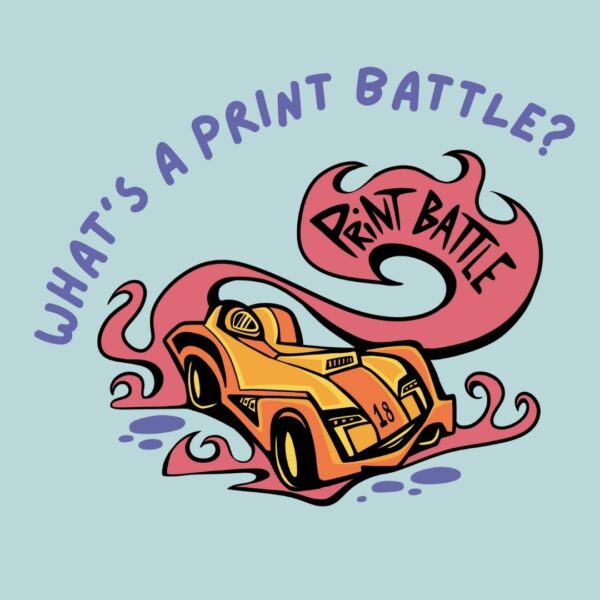Guest post by Thea Liberty Nichols
Email interview conducted with Steve Ruiz
Steve Ruiz is an artist and writer from Chicago. He is the Managing Editor of Chicago Art Review (.com) and has contributed to a number of publications including Jettison Quarterly, NewCity Magazine, and Proximity Magazine. Information on his artwork can be seen at steveruizart.com.
TLN: Can you start by telling us a little bit about Chicago Art Review? I’m especially interested (as a former participant) in the audio component you have on there, which, as far as I’m aware, is unique to your site as a listings format.
SR: I started Chicago Art Review in April 2009, right around the time I was graduating from college. The blog started as a joke (I’d told my former professor, Geoffrey Todd Smith, that I would write a gonzo review of his show) but I quickly realized the project’s potential as a way of engaging with the Chicago art community, which I was pretty unfamiliar with after spending five years studying elsewhere. Chicago Art Review became a reason to get out to shows, meet artists, and know about their work. My idea was to learn in a public way and IÂ think people appreciated the effort, especially as I didn’t really know anything or anyone and was writing from the hip on first impressions.
TLN: On that note, since several of the folks you just mentioned also have blogs or websites of their own, or contribute to other publications online or in print, can you tell us a little bit about how you expanded your network to include them? And do you feel like more an editor (vs. a writer) because of it?
SR: I My approach to involving other writers with Chicago Art Review is pretty casual. I don’t have any regular contributors, but I try to involve other people when I think they have an interest in writing something that I’d like to read but wouldn’t otherwise have a place to read it. The loose format on the site allows me to publish writing that wouldn’t fit elsewhere for whatever reason, and sometimes the appeal of “do whatever you want” is enough to get contributors on board. But no, I don’t think I work hard enough to feel like a Managing Editor.
TLN: It sounds like Chicago Art Review takes a very experimental approach to things and is happy to evolve by recognizing what works best for it– knowing what you know now, do you ever wish you could go back and take a different tact? Like do you feel the internet is written in stone or invisible ink? And where do you see Chicago Art Review going next– anything interesting in the hopper?
SR: No, I don’t think I’d change anything I’ve done, but I’d like to have done more of it. But its early, we’ve got time.
If anything, I’m happy to have established a sort of authoritative sounding brand based on formal experimentation and stubborn amateurism. Not to flatter the context here, but a lot of my ideas about art criticism were informed by seeing how the Bad at Sports podcast could deliver rich critical content in form based on the unlikely combination of a lack of claimed authority, persistant volunteerism, over-education, topical expertise, conversational tones, and alcohol. That relationship with criticism feels much more appropriate for this city’s community. I’m interested in finding a written form and style that reflects the culture here, and that serves our needs and demands for writing, which are very different than in other cities. Some things are valued less, some more, and I feel like that should be taken into consideration.
As for going forward, a few months ago I started – but do not claim any ownership of – a Facebook group called #chiart for art writers and artists to talk to each-other about art in Chicago. The name comes from a slightly problematic twitter hashtag I’d got going, but which was hard to use for bigger conversations. The Facebook group has worked much better, and I’ve been amazed at the quality of conversation there and at the ability for a certain number of engaged individuals to generate high-value critical dialog while essentially slacking off at work. Its easily my primary resource for almost all the tasks I’d previously have gone to didactic journalism for, making it harder to justify writing that kind of thing. I’m fascinated by the idea of body surfing legitimate critical discourse on crowds of distracted experts, and am looking for ways to turn that kind of conversation-based model into something that can produce discrete pieces of writing for us to print for binders and to cite on our CVs. Doesn’t that sound fun?
Thea Liberty Nichols is an arts administrator, independent curator and freelance writer. To listen to an excerpt from the “Form and Content of Writing” panel she moderated as part of Stockyard Institute‘s exhibition at DePaul University entitled Nomadic Studio, please click here. (Featuring commentary from Patrice Connolly, Claudine Ise, Abraham Ritchie and Bert Stabler)
- First there is a man, then there is no man, then there is (The Pina Colada Song) - March 2, 2022
- “What Does It Mean?” - September 29, 2020
- The Reality of Rejection - August 9, 2018






